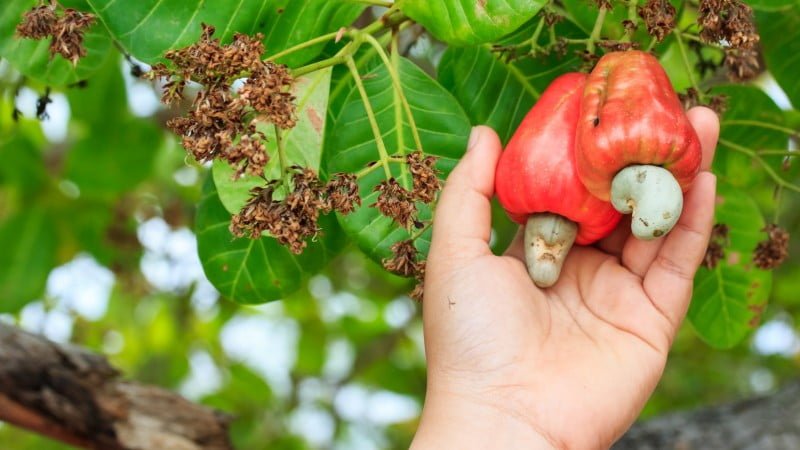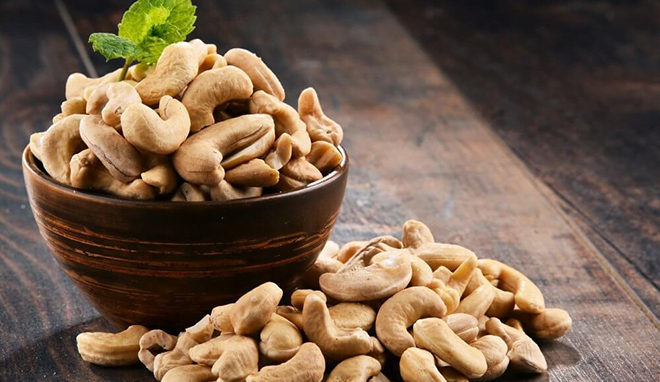Vietnamese cashews, prized for their creamy texture and rich flavor, are a sought-after delicacy in both local cuisine and international markets.
From Salads to Stir-Fries: How Vietnamese Cashews Can Elevate Your Cooking Game
Vietnamese cashews have become increasingly popular in cooking due to their versatility and unique flavor. Cashews are native to Brazil but are now widely cultivated in Vietnam, making it one of the largest cashew producers in the world. These nuts are not only delicious on their own but can also be used in a variety of dishes to add texture, flavor, and nutritional value.
Vietnamese cashews can be used in both sweet and savory dishes, making them a versatile ingredient in the kitchen. They can be roasted and salted for a crunchy snack, ground into a creamy cashew butter, or used as a topping for salads, stir-fries, soups, and stews. The possibilities are endless when it comes to incorporating Vietnamese cashews into your cooking.
The Nutritional Benefits of Vietnamese Cashews
In addition to their delicious taste and versatility, Vietnamese cashews also offer numerous health benefits. They are an excellent source of protein, making them a great option for vegetarians and vegans looking to increase their protein intake. Cashews also contain healthy fats, including monounsaturated fats that can help lower bad cholesterol levels and reduce the risk of heart disease.
Cashews are also rich in vitamins and minerals such as magnesium, copper, and zinc. Magnesium is essential for bone health and energy production, while copper is important for the production of collagen and elastin, which help keep the skin healthy and youthful. Zinc is crucial for immune function and wound healing.
Including Vietnamese cashews in your diet can contribute to a balanced and nutritious eating plan. They provide a good source of energy, essential nutrients, and can help keep you feeling full and satisfied.
The Different Types of Vietnamese Cashews and Their Uses
There are several different types of Vietnamese cashews available on the market, each with its own unique characteristics and uses. Raw cashews are unroasted and unsalted, making them a versatile option for cooking. They can be used in both sweet and savory dishes, such as salads, stir-fries, and baked goods.
Roasted cashews have a rich, nutty flavor and a crunchy texture. They are often seasoned with salt or other spices to enhance their taste. Roasted cashews can be enjoyed as a snack on their own or used as a topping for salads, soups, and stir-fries.
Flavored cashews are a popular choice for those looking for a unique twist on traditional cashews. They are often coated in spices, such as chili powder or curry powder, to add an extra kick of flavor. Flavored cashews can be enjoyed on their own or used as a topping for salads, stir-fries, and other dishes.
How to Choose and Store Vietnamese Cashews for Optimal Freshness
When selecting Vietnamese cashews, it is important to choose high-quality nuts to ensure optimal freshness and flavor. Look for cashews that are plump, firm, and free from any signs of mold or discoloration. Avoid cashews that have a rancid smell or taste.
To maintain the freshness of your cashews, store them in an airtight container in a cool, dry place. Cashews can be stored at room temperature for up to three months or in the refrigerator for up to six months. If you plan to store them for an extended period, consider freezing them to prolong their shelf life.
Adding Vietnamese Cashews to Salads for Extra Crunch and Flavor
One of the easiest ways to incorporate Vietnamese cashews into your cooking is by adding them to salads. Cashews add a satisfying crunch and nutty flavor to salads, making them a delicious and nutritious addition.
To make a simple cashew salad, start with a bed of mixed greens or your favorite salad greens. Add sliced cucumbers, cherry tomatoes, and diced avocado for freshness and creaminess. Top with a handful of roasted cashews for crunch and flavor. Drizzle with your favorite dressing, such as a tangy vinaigrette or a creamy avocado dressing.
For a more substantial salad, add grilled chicken or shrimp for protein, and crumbled feta cheese for added flavor. The cashews will complement the other ingredients and add a delightful texture to the salad.
Using Vietnamese Cashews in Stir-Fries for a Rich and Creamy Texture
Stir-fries are another great way to incorporate Vietnamese cashews into your cooking. Cashews can add a rich and creamy texture to stir-fry dishes, making them more satisfying and flavorful.
To make a cashew stir-fry, start by heating some oil in a wok or skillet over medium-high heat. Add your choice of vegetables, such as bell peppers, broccoli, carrots, and snap peas. Stir-fry until the vegetables are crisp-tender.
Next, add your choice of protein, such as chicken, beef, or tofu. Cook until the protein is cooked through. Add a sauce of your choice, such as soy sauce or teriyaki sauce, and stir to coat the ingredients.
Finally, add a handful of roasted cashews to the stir-fry and toss to combine. The cashews will add a delightful crunch and nutty flavor to the dish. Serve the stir-fry over steamed rice or noodles for a complete meal.
Incorporating Vietnamese Cashews into Soups and Stews for a Nutty Twist
Soups and stews are another great way to incorporate Vietnamese cashews into your cooking. Cashews can add a nutty flavor and creamy texture to savory dishes, making them more flavorful and satisfying.
To make a cashew soup or stew, start by sautéing onions, garlic, and your choice of vegetables in a large pot. Add vegetable or chicken broth and bring to a boil. Reduce the heat and simmer until the vegetables are tender.
Next, add your choice of protein, such as chicken, beef, or tofu. Cook until the protein is cooked through. Add a handful of raw cashews to the soup or stew and simmer for a few more minutes to allow the flavors to meld together.
Finally, use an immersion blender or a regular blender to puree the soup or stew until smooth and creamy. The cashews will add a rich and creamy texture to the dish, making it more satisfying and flavorful. Serve the soup or stew with crusty bread for a complete meal.
Baking with Vietnamese Cashews: Sweet and Savory Recipes
Vietnamese cashews can also be used in baking to add flavor and texture to both sweet and savory dishes. They can be ground into a fine powder and used as a substitute for flour in gluten-free baking recipes, or they can be chopped and added to cookies, cakes, and bread for added crunch and flavor.
To make cashew cookies, start by creaming together butter and sugar until light and fluffy. Add an egg and vanilla extract and mix until well combined. In a separate bowl, whisk together flour, baking soda, and salt. Gradually add the dry ingredients to the wet ingredients and mix until just combined. Fold in chopped cashews.
Drop spoonfuls of dough onto a baking sheet lined with parchment paper. Bake in a preheated oven at 350°F (175°C) for 10-12 minutes or until golden brown around the edges. Allow the cookies to cool on the baking sheet for a few minutes before transferring them to a wire rack to cool completely.
For a savory twist, try adding chopped cashews to bread dough. Simply mix together flour, yeast, salt, sugar, and water in a large bowl. Knead the dough until smooth and elastic. Fold in chopped cashews and let the dough rise until doubled in size. Shape the dough into a loaf and bake in a preheated oven at 375°F (190°C) for 30-35 minutes or until golden brown.
Making Homemade Cashew Butter with Vietnamese Cashews
One of the most popular ways to use Vietnamese cashews in cooking is by making homemade cashew butter. Cashew butter is a delicious and nutritious spread that can be used in a variety of ways, from spreading on toast to adding to smoothies and baked goods.
To make homemade cashew butter, start by roasting raw cashews in a preheated oven at 350°F (175°C) for 10-12 minutes or until golden brown. Allow the cashews to cool slightly before transferring them to a food processor or blender.
Process the cashews for several minutes, scraping down the sides as needed, until they form a smooth and creamy butter. If desired, add a pinch of salt or a drizzle of honey for added flavor.
Transfer the cashew butter to an airtight container and store it in the refrigerator for up to two weeks. Use it as a spread on toast, as a dip for fruits and vegetables, or as an ingredient in smoothies, sauces, and baked goods.
Vietnamese Cashews as a Vegan and Gluten-Free Alternative in Cooking
Vietnamese cashews are not only delicious but also a great option for those following a vegan or gluten-free diet. They can be used as a substitute for dairy products in vegan recipes or as a substitute for flour in gluten-free baking recipes.
Cashews can be soaked and blended with water to create a creamy cashew milk that can be used as a dairy-free alternative in recipes such as smoothies, soups, and sauces. Cashew milk is rich and creamy, making it a great option for those looking for a plant-based milk alternative.
Cashews can also be ground into a fine powder and used as a substitute for flour in gluten-free baking recipes. Cashew flour is naturally gluten-free and adds a rich and nutty flavor to baked goods. It can be used in recipes such as cookies, cakes, and bread.
Experimenting with Vietnamese Cashews to Enhance Your Culinary Skills
In conclusion, Vietnamese cashews are a versatile and nutritious ingredient that can enhance your culinary skills. Whether you use them in salads, stir-fries, soups, stews, baked goods, or as a vegan or gluten-free alternative, cashews add flavor, texture, and nutritional value to your dishes.
Don’t be afraid to experiment with Vietnamese cashews in your cooking. Try different recipes and techniques to discover new flavors and combinations. With their unique taste and versatility, Vietnamese cashews are sure to elevate your culinary skills and impress your family and friends. So go ahead and start incorporating Vietnamese cashews into your cooking today!
Originally posted 2024-02-27 15:38:18.

カシューナッツ②20200408144019990_Data.jpg)

